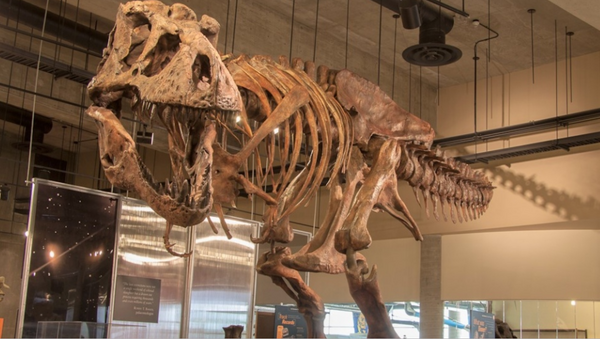In 1988, paleontologist Robert Bakker suggested that the Nanotyrannus, which he claimed was slightly bigger than a draft horse, used to exist. However, in a recent study, researchers at Oklahoma State University have proposed a different explanation: the fossils some believe to be of the Nanotyrannus are simply younger specimens of the Tyrannosaurus rex, rather than a different species.
In the study, published in the journal Science Advances, the researchers used high-powered microscopes to inspect samples of fossilized bone from two alleged Nanotyrannus specimens. Using osteohistology to determine the microscopic structure and chemical composition of the bones, the researchers concluded that the Nanotyrannus remains were just immature Tyrannosaurus rex specimens and not a different species.
“Osteohistology reveals these were immature individuals 13 to 15 years of age, exhibiting growth rates similar to extant birds and mammals, and that annual growth was dependent on resource abundance,” the study’s abstract explains.
“Together, our results support the synonomization of ‘Nanotyrannus’ into Tyrannosaurus and fail to support the hypothesized presence of a sympatric tyrannosaurid species of markedly smaller adult body size.”
By analyzing the size of the blood vessel openings of the dinosaur bones, the researchers also concluded that the animals were in a rapid growth period when they died. One of the dinosaurs died at the age of 13 and the other at the age of 15.
In March, a Tyrannosaurus rex dubbed “Scotty,” discovered in western Canada in 1991, was declared the world’s biggest. Scotty is estimated to have been more than 40 feet long and to have weighed around 8,800 pounds while alive around 66 million years ago.
Scotty’s bones were discovered in August 1991 by high school teacher Robert Gebhardt during an expedition with other paleontologists, according to multiple reports. It took years for scientists to remove the sandstones that covered Scotty’s bones and reassemble around 65% of the gigantic predator.



